1.Identification
1.1 GHS Product identifier
| Product name | acrylonitrile |
|---|
1.2 Other means of identification
| Product number | - |
|---|---|
| Other names | Acrylonitrile |
1.3 Recommended use of the chemical and restrictions on use
| Identified uses | For industry use only. Acrylonitrile is primarily used in the manufacture of acrylic and modacrylic fibers. It is also used as a raw material in the manufacture of plastics (acrylonitrile-butadiene-styrene and styrene-acrylonitrile resins), adiponitrile, acrylamide, and nitrile rubbers and barrier resins. |
|---|---|
| Uses advised against | no data available |
1.4 Supplier's details
| Company | MOLBASE (Shanghai) Biotechnology Co., Ltd. |
|---|---|
| Address | Floor 4 & 5, Building 12, No. 1001 North Qinzhou Road, Xuhui District, Shanghai, China |
| Telephone | +86(21)64956998 |
| Fax | +86(21)54365166 |
1.5 Emergency phone number
| Emergency phone number | +86-400-6021-666 |
|---|---|
| Service hours | Monday to Friday, 9am-5pm (Standard time zone: UTC/GMT +8 hours). |
2.Hazard identification
2.1 Classification of the substance or mixture
Flammable liquids, Category 2
Acute toxicity - Oral, Category 3
Acute toxicity - Dermal, Category 3
Skin irritation, Category 2
Serious eye damage, Category 1
Skin sensitization, Category 1
Acute toxicity - Inhalation, Category 3
Specific target organ toxicity – single exposure, Category 3
Carcinogenicity, Category 1B
Hazardous to the aquatic environment, long-term (Chronic) - Category Chronic 2
2.2 GHS label elements, including precautionary statements
| Pictogram(s) |      |
|---|---|
| Signal word | Danger |
| Hazard statement(s) | H225 Highly flammable liquid and vapour H301 Toxic if swallowed H311 Toxic in contact with skin H315 Causes skin irritation H318 Causes serious eye damage H317 May cause an allergic skin reaction H331 Toxic if inhaled H335 May cause respiratory irritation H350 May cause cancer H411 Toxic to aquatic life with long lasting effects |
| Precautionary statement(s) | |
| Prevention | P210 Keep away from heat, hot surfaces, sparks, open flames and other ignition sources. No smoking. P233 Keep container tightly closed. P240 Ground and bond container and receiving equipment. P241 Use explosion-proof [electrical/ventilating/lighting/...] equipment. P242 Use non-sparking tools. P243 Take action to prevent static discharges. P280 Wear protective gloves/protective clothing/eye protection/face protection. P264 Wash ... thoroughly after handling. P270 Do not eat, drink or smoke when using this product. P261 Avoid breathing dust/fume/gas/mist/vapours/spray. P272 Contaminated work clothing should not be allowed out of the workplace. P271 Use only outdoors or in a well-ventilated area. P201 Obtain special instructions before use. P202 Do not handle until all safety precautions have been read and understood. P273 Avoid release to the environment. |
| Response | P303+P361+P353 IF ON SKIN (or hair): Take off immediately all contaminated clothing. Rinse skin with water [or shower]. P370+P378 In case of fire: Use ... to extinguish. P301+P310 IF SWALLOWED: Immediately call a POISON CENTER/doctor/… P321 Specific treatment (see ... on this label). P330 Rinse mouth. P302+P352 IF ON SKIN: Wash with plenty of water/... P312 Call a POISON CENTER/doctor/…if you feel unwell. P361+P364 Take off immediately all contaminated clothing and wash it before reuse. P332+P313 If skin irritation occurs: Get medical advice/attention. P362+P364 Take off contaminated clothing and wash it before reuse. P305+P351+P338 IF IN EYES: Rinse cautiously with water for several minutes. Remove contact lenses, if present and easy to do. Continue rinsing. P310 Immediately call a POISON CENTER/doctor/… P333+P313 If skin irritation or rash occurs: Get medical advice/attention. P304+P340 IF INHALED: Remove person to fresh air and keep comfortable for breathing. P311 Call a POISON CENTER/doctor/… P308+P313 IF exposed or concerned: Get medical advice/ attention. P391 Collect spillage. |
| Storage | P403+P235 Store in a well-ventilated place. Keep cool. P405 Store locked up. P403+P233 Store in a well-ventilated place. Keep container tightly closed. |
| Disposal | P501 Dispose of contents/container to ... |
2.3 Other hazards which do not result in classification
none
3.Composition/information on ingredients
3.1 Substances
| Chemical name | Common names and synonyms | CAS number | EC number | Concentration |
|---|---|---|---|---|
| acrylonitrile | acrylonitrile | 107-13-1 | none | 100% |
4.First-aid measures
4.1 Description of necessary first-aid measures
General advice
Consult a physician. Show this safety data sheet to the doctor in attendance.
If inhaled
Fresh air, rest. Refer for medical attention. See Notes.
In case of skin contact
First rinse with plenty of water for at least 15 minutes, then remove contaminated clothes and rinse again. Refer for medical attention .
In case of eye contact
First rinse with plenty of water for several minutes (remove contact lenses if easily possible), then refer for medical attention.
If swallowed
Rinse mouth. Give a slurry of activated charcoal in water to drink. Induce vomiting (ONLY IN CONSCIOUS PERSONS!). Refer for medical attention .
4.2 Most important symptoms/effects, acute and delayed
It is classified as very toxic. Probable oral lethal dose for human is 50-500 mg/kg (between 1 teaspoon and 1 oz.) for a 70 kg (150 lb.) person. Irritant skin dose -- 500 mg. Toxic concentrations have been reported at 16 ppm/20 min. Acute toxicity is similar to that due to cyanide poisoning, and the level of cyanide ion in blood is related to the level of poisoning. Inhalation or ingestion results in collapse and death due to tissue anoxia (lack of oxygen) and cardiac arrest (heart failure). (EPA, 1998)
4.3 Indication of immediate medical attention and special treatment needed, if necessary
Severe acute inhalations should be treated like cyanide poisoning. The first priority is to establish adequate ventilation (100% oxygen) and circulation, since cyanide antidotes are theoretically useful but clinically unproven in acrylonitrile poisoning.
5.Fire-fighting measures
5.1 Extinguishing media
Suitable extinguishing media
Approach fire from upwind to avoid hazardous vapors and toxic decomposition products. Use water spray, dry chemical, "alcohol resistant" foam, or carbon dioxide. Use water spray to keep fire-exposed containers cool. Fight fire from protected location or maximum possible distance.
5.2 Specific hazards arising from the chemical
Materials are too dangerous to health to expose fire fighters. A few whiffs of vapor could cause death or vapor or liquid could be fatal on penetrating the fire fighter's normal full protective clothing. The normal full protective clothing and breathing apparatus available to the average fire department will not provide adequate protection against inhalation or skin contact with these materials. Explosion hazard is moderate. It is flammable and explosive at normal room temperatures. Can react violently with strong acids, amines, strong alkalis. Vapors may travel considerable distance to source of ignition and flash back. Dilute solutions are also hazardous (flash point of a solution of 2 percent in water is 70F). When heated or burned, toxic hydrogen cyanide gas and oxides of nitrogen are formed. Avoid strong acids, amines, alkalis. Incompatible with strong oxidizers (especially bromine) copper and copper alloys. Unstable, moderate hazard is possible when it is exposed to flames, strong acids, amines and alkalis. May polymerize spontaneously in the container, particularly in absence of oxygen or on exposure to visible light. If polymerization occurs in containers, there is a possibility of violent rupture. (EPA, 1998)
5.3 Special protective actions for fire-fighters
Wear self-contained breathing apparatus for firefighting if necessary.
6.Accidental release measures
6.1 Personal precautions, protective equipment and emergency procedures
Use personal protective equipment. Avoid dust formation. Avoid breathing vapours, mist or gas. Ensure adequate ventilation. Evacuate personnel to safe areas. Avoid breathing dust. For personal protection see section 8.
6.2 Environmental precautions
Evacuate danger area! Consult an expert! Personal protection: chemical protection suit including self-contained breathing apparatus. Ventilation. Do NOT wash away into sewer. Do NOT let this chemical enter the environment. Collect leaking and spilled liquid in covered containers as far as possible. Absorb remaining liquid in sand or inert absorbent. Then store and dispose of according to local regulations.
6.3 Methods and materials for containment and cleaning up
Remove solutions containing acrylonitrile by vacuum cleaning to prevent an increase in airborne concentrations.
7.Handling and storage
7.1 Precautions for safe handling
Avoid contact with skin and eyes. Avoid formation of dust and aerosols. Avoid exposure - obtain special instructions before use.Provide appropriate exhaust ventilation at places where dust is formed. For precautions see section 2.2.
7.2 Conditions for safe storage, including any incompatibilities
Fireproof. Separated from strong oxidants, strong bases and food and feedstuffs. Cool. Keep in the dark. Ventilation along the floor. Store only if stabilized.PRECAUTIONS FOR "CARCINOGENS": Storage site should be as close as practical to lab in which carcinogens are to be used, so that only small quantities required for ... expt need to be carried. Carcinogens should be kept in only one section of cupboard, an explosion-proof refrigerator or freezer (depending on chemicophysical properties ...) that bears appropriate label. An inventory ... should be kept, showing quantity of carcinogen & date it was acquired ... Facilities for dispensing ... should be contiguous to storage area. /Chemical Carcinogens/
8.Exposure controls/personal protection
8.1 Control parameters
Occupational Exposure limit values
Recommended Exposure Limit: 10-hour Time-Weighted Average: 1 ppm. Skin.
Recommended Exposure Limit: 15 Minute Ceiling Value: 10 ppm. Skin.
NIOSH considers acrylonitrile to be a potential occupational carcinogen.
NIOSH usually recommends that occupational exposures to carcinogens be limited to the lowest feasible concn.
Biological limit values
no data available
8.2 Appropriate engineering controls
Handle in accordance with good industrial hygiene and safety practice. Wash hands before breaks and at the end of workday.
8.3 Individual protection measures, such as personal protective equipment (PPE)
Eye/face protection
Safety glasses with side-shields conforming to EN166. Use equipment for eye protection tested and approved under appropriate government standards such as NIOSH (US) or EN 166(EU).
Skin protection
Wear impervious clothing. The type of protective equipment must be selected according to the concentration and amount of the dangerous substance at the specific workplace. Handle with gloves. Gloves must be inspected prior to use. Use proper glove removal technique(without touching glove's outer surface) to avoid skin contact with this product. Dispose of contaminated gloves after use in accordance with applicable laws and good laboratory practices. Wash and dry hands. The selected protective gloves have to satisfy the specifications of EU Directive 89/686/EEC and the standard EN 374 derived from it.
Respiratory protection
Wear dust mask when handling large quantities.
Thermal hazards
no data available
9.Physical and chemical properties
| Physical state | clear liquid |
|---|---|
| Colour | Clear, colorless liquid |
| Odour | PRACTICALLY ODORLESS, OR WITH A VERY SLIGHT ODOR OF PEACH KERNELS |
| Melting point/ freezing point | -83ºC |
| Boiling point or initial boiling point and boiling range | 77ºC |
| Flammability | Class IB Flammable Liquid: Fl.P. below 22.78°C and BP at or above 37.78°C.Highly flammable. Gives off irritating or toxic fumes (or gases) in a fire. |
| Lower and upper explosion limit / flammability limit | Lower flammable limit:3.0% by volume; Upper flammable limit:17% by volume |
| Flash point | -5ºC |
| Auto-ignition temperature | 481.11°C (USCG, 1999) |
| Decomposition temperature | no data available |
| pH | pH = 6.0-7.5 (5% aqueous solution) |
| Kinematic viscosity | 0.34 cP at 25°C |
| Solubility | In water:Soluble. 7.45 g/100 mL |
| Partition coefficient n-octanol/water (log value) | log Kow = 0.25 |
| Vapour pressure | 86 mm Hg ( 20 °C) |
| Density and/or relative density | 0.8075 |
| Relative vapour density | 1.83 (vs air) |
| Particle characteristics | no data available |
10.Stability and reactivity
10.1 Reactivity
no data available
10.2 Chemical stability
Stable under recommended storage conditions.
10.3 Possibility of hazardous reactions
Highly ignitable and flammable.The vapour is heavier than air and may travel along the ground; distant ignition possible.ACRYLONITRILE produces poisonous hydrogen cyanide gas on contact with strong acids or when heated to decomposition. Reacts violently with strong oxidizing agents (dibenzoyl peroxide, di-tert-butylperoxide, bromine) [Sax, 9th ed., p. 61]. Rapidly ignites in air and forms explosive mixtures with air. Polymerizes violently in the presence of strong bases or acids. Underwent a runaway reaction culminating in an explosion on contact with a small amount of bromine or solid silver nitrate [Bretherick, 5th ed., 1995, p. 404].
10.4 Conditions to avoid
no data available
10.5 Incompatible materials
Strong oxidizers, acids and alkalis; bromine; amines. [Note: Unless inhibited (usually with methylhydroquinone) may polymerize spontaneously or when heated or in presence of strong alkali. Attacks copper.]
10.6 Hazardous decomposition products
... When burned may decompose to free cyanide.
11.Toxicological information
Acute toxicity
- Oral: LD50 Rat oral 78 mg/kg
- Inhalation: LC50 Rat inhalation 425 ppm/4 hr
- Dermal: no data available
Skin corrosion/irritation
no data available
Serious eye damage/irritation
no data available
Respiratory or skin sensitization
no data available
Germ cell mutagenicity
no data available
Carcinogenicity
NTP: Reasonably anticipated to be a human carcinogen
Reproductive toxicity
No information is available on the reproductive or developmental effects of acrylonitrile in humans. Fetal malformations (including short tail, missing vertebrae, short trunk, omphalocele, and hemivertebra) have been reported in rats exposed to acrylonitrile by inhalation. In mice orally exposed to acrylonitrile, degenerative changes in testicular tubules and decreased sperm count were observed.
STOT-single exposure
no data available
STOT-repeated exposure
no data available
Aspiration hazard
no data available
12.Ecological information
12.1 Toxicity
- Toxicity to fish: LC50; Species: Pimephales promelas (fathead minnow); Conditions: static bioassay; Concentration: 2600 ug/L for 30 days
- Toxicity to daphnia and other aquatic invertebrates: EC50; Species: Daphnia magna (Water Flea) age <24 hr neonate; Conditions: freshwater, renewal, 25°C, pH 7.0, hardness 1.86 mg/L CaCO3, dissolved oxygen 8.0 mg/L; Concentration: 7380 ug/L for 48 hr; Effect: intoxication, immobilization
- Toxicity to algae: no data available
- Toxicity to microorganisms: no data available
12.2 Persistence and degradability
AEROBIC: Biodegradation of acrylonitrile has been demonstrated in wastewater, activated sludge, and various microbial cultures free from other living organisms(1). Enzyme-catalyzed hydrolysis of nitriles, such as acetonitrile, has been shown to proceed by two distinct routes(2,3); a nitrilase transforms the nitriles directly into acids plus ammonium ion, or a nitrile hydratase forms the amide which is hydrolyzed to acid plus ammonium ion by amidase(2,3). Acrylonitrile concentrations of 5 and 10 ppm in wastewater were completely degraded within 7 days in static-culture flask screening studies(4). In studies using activated sludge inocula, >95% degradation of acrylonitrile and >70% of theoretical BOD removal was reported after 21 days of acclimation in a screening study(5). In a waste water treatment plant, 30% of theoretical BOD removal of acrylonitrile was reported after 10 days(6). Using a bench-scale continuous flow reactor, >99% degradation of acrylonitrile and 30% of theoretical BOD removal was reported(7). Other studies, report 0 and 38% of theoretical BOD removal after 5 and 20 days respectively(8). Acrylonitrile completely degraded in Mississippi river water in 6 days(9) and degraded completely in 20 days in another study using river water, requiring less time for degradation with acclimation(10). In river water, 65% theoretical BOD was removed in 5 days after 27 days acclimation(11). At concn up to 100 ppm, complete degradation of 14C-acrylonitrile occurred in <2 days in a Londo soil(1). Greater than 50% of the radioactivity was recovered as 14C-carbon dioxide following 6 days of incubation. Transient formation of acrylamide and acrylic acid as intermediates of degradation were observed(1). Similar results were obtained in studies conducted with Tappan loam and sand(1). Acclimation of the microorganisms was required before degradation of 100 ppm acrylonitrile in sand(1). Degradation of higher concentration (500 and 1,000 ppm in Londo soil) was relatively slow and may be due to inhibitory effects of the parent compound(1).
12.3 Bioaccumulative potential
A whole body BCF of 48 was determined for bluegills exposed to acrylonitrile for 28 days (or until equilibrium was obtained) in a flowing water system(1). According to a classification scheme(2), this BCF suggests the potential for bioconcentration in aquatic organisms is moderate(SRC).
12.4 Mobility in soil
Using a structure estimation method based on molecular connectivity indices(1), the Koc of acrylonitrile can be estimated to be 9(SRC). The Koc of acrylonitrile can be estimated as 29(SRC), using a log Kow of 0.25(2) and a regression-derived equation(1). According to a classification scheme(3), these estimated Koc values suggest that acrylonitrile is expected to have very high mobility in soil.
12.5 Other adverse effects
no data available
13.Disposal considerations
13.1 Disposal methods
Product
The material can be disposed of by removal to a licensed chemical destruction plant or by controlled incineration with flue gas scrubbing. Do not contaminate water, foodstuffs, feed or seed by storage or disposal. Do not discharge to sewer systems.
Contaminated packaging
Containers can be triply rinsed (or equivalent) and offered for recycling or reconditioning. Alternatively, the packaging can be punctured to make it unusable for other purposes and then be disposed of in a sanitary landfill. Controlled incineration with flue gas scrubbing is possible for combustible packaging materials.
14.Transport information
14.1 UN Number
| ADR/RID: UN1093 | IMDG: UN1093 | IATA: UN1093 |
14.2 UN Proper Shipping Name
| ADR/RID: ACRYLONITRILE, STABILIZED |
| IMDG: ACRYLONITRILE, STABILIZED |
| IATA: ACRYLONITRILE, STABILIZED |
14.3 Transport hazard class(es)
| ADR/RID: 3 | IMDG: 3 | IATA: 3 |
14.4 Packing group, if applicable
| ADR/RID: I | IMDG: I | IATA: I |
14.5 Environmental hazards
| ADR/RID: yes | IMDG: yes | IATA: yes |
14.6 Special precautions for user
no data available
14.7 Transport in bulk according to Annex II of MARPOL 73/78 and the IBC Code
no data available
15.Regulatory information
15.1 Safety, health and environmental regulations specific for the product in question
| Chemical name | Common names and synonyms | CAS number | EC number |
|---|---|---|---|
| acrylonitrile | acrylonitrile | 107-13-1 | none |
| European Inventory of Existing Commercial Chemical Substances (EINECS) | Listed. | ||
| EC Inventory | Listed. | ||
| United States Toxic Substances Control Act (TSCA) Inventory | Listed. | ||
| China Catalog of Hazardous chemicals 2015 | Listed. | ||
| New Zealand Inventory of Chemicals (NZIoC) | Listed. | ||
| Philippines Inventory of Chemicals and Chemical Substances (PICCS) | Listed. | ||
| Vietnam National Chemical Inventory | Listed. | ||
| Chinese Chemical Inventory of Existing Chemical Substances (China IECSC) | Listed. | ||
16.Other information
Information on revision
| Creation Date | Aug 19, 2017 |
|---|---|
| Revision Date | Aug 19, 2017 |
Abbreviations and acronyms
- CAS: Chemical Abstracts Service
- ADR: European Agreement concerning the International Carriage of Dangerous Goods by Road
- RID: Regulation concerning the International Carriage of Dangerous Goods by Rail
- IMDG: International Maritime Dangerous Goods
- IATA: International Air Transportation Association
- TWA: Time Weighted Average
- STEL: Short term exposure limit
- LC50: Lethal Concentration 50%
- LD50: Lethal Dose 50%
- EC50: Effective Concentration 50%
References
- IPCS - The International Chemical Safety Cards (ICSC), website: http://www.ilo.org/dyn/icsc/showcard.home
- HSDB - Hazardous Substances Data Bank, website: https://toxnet.nlm.nih.gov/newtoxnet/hsdb.htm
- IARC - International Agency for Research on Cancer, website: http://www.iarc.fr/
- eChemPortal - The Global Portal to Information on Chemical Substances by OECD, website: http://www.echemportal.org/echemportal/index?pageID=0&request_locale=en
- CAMEO Chemicals, website: http://cameochemicals.noaa.gov/search/simple
- ChemIDplus, website: http://chem.sis.nlm.nih.gov/chemidplus/chemidlite.jsp
- ERG - Emergency Response Guidebook by U.S. Department of Transportation, website: http://www.phmsa.dot.gov/hazmat/library/erg
- Germany GESTIS-database on hazard substance, website: http://www.dguv.de/ifa/gestis/gestis-stoffdatenbank/index-2.jsp
- ECHA - European Chemicals Agency, website: https://echa.europa.eu/


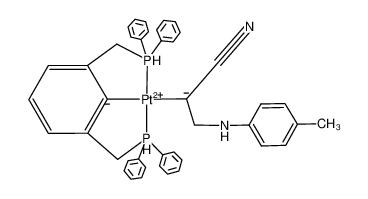
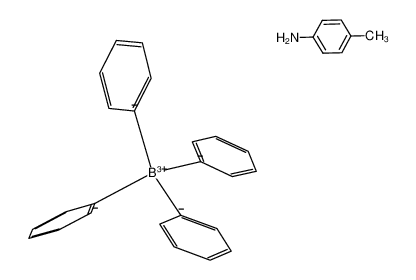
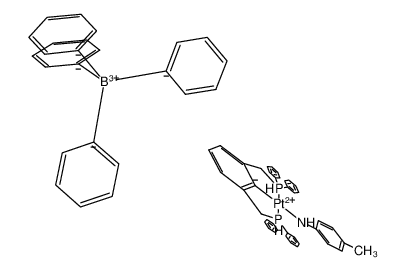
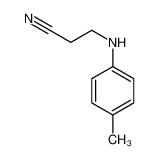





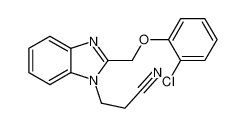


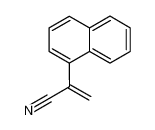









-
-

-
-
-

-
-
-

-
-
-

-
-
-

-
-
-

-
-
-

-
-
-
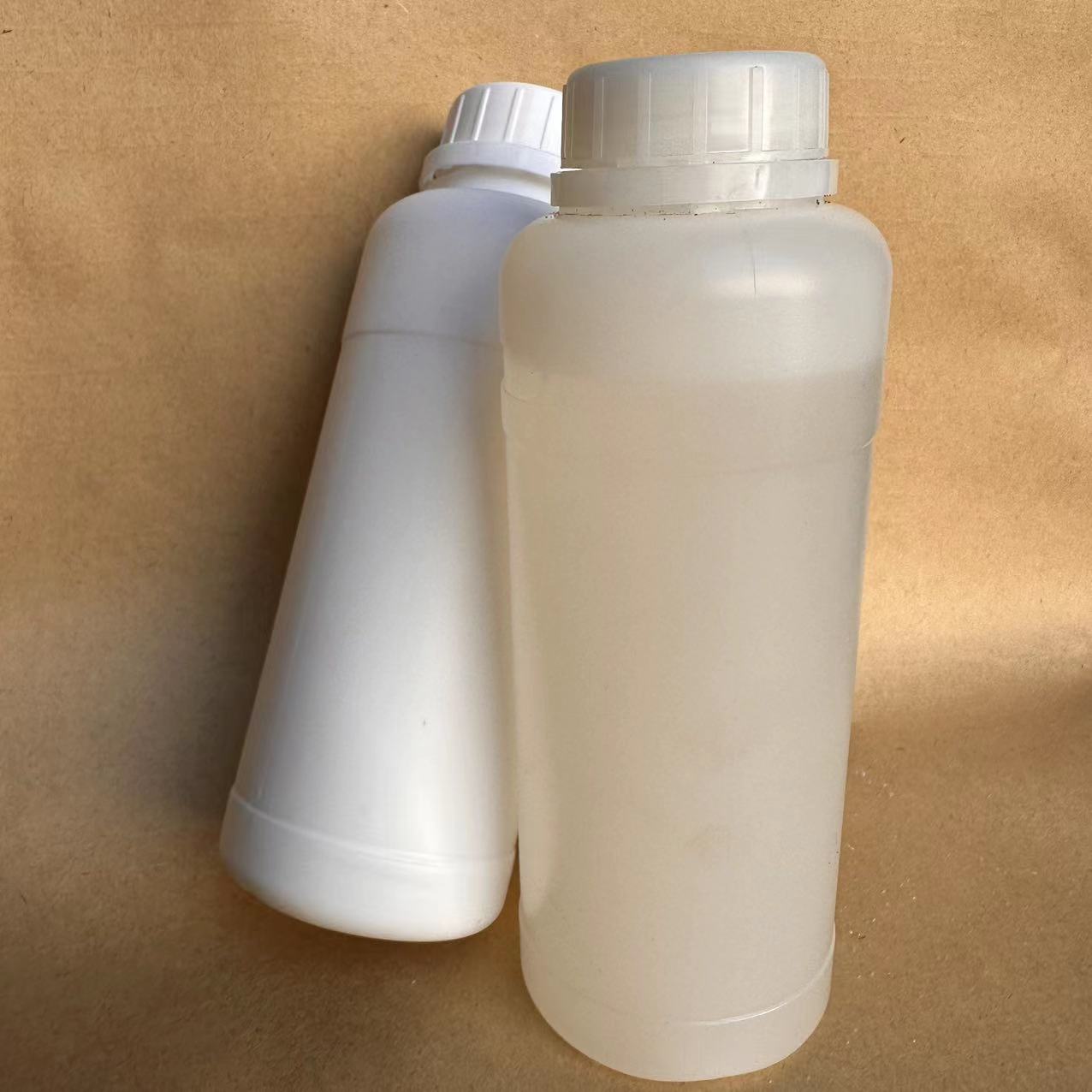
-
-
-

-
-
-

-
More Suppliers>>Wenzhou Win-Win Chemical Co., Ltd.
CHINA
Purity: 98%
Lead Time: 3 Day(s)
Price: -
Hangzhou J&H Chemical Co., Ltd.
CHINA
Purity: >97%
Lead Time: 7 Day(s)
Price: -
Baoji Guokang Bio-Technology Co., Ltd
CHINA
Purity: 99%
Lead Time: 5 Day(s)
Price: -
Henan Coreychem Co.,Ltd
CHINA
Purity: 98%
Lead Time: 3 Day(s)
Price: Min $1 /g
Hangzhou DayangChem Co., Ltd
CHINA
Purity: 98%
Lead Time: 7 Day(s)
Price: -
Skyrun Industrial Co., Limited
CHINA
Purity: 99%
Lead Time: 7 Day(s)
Price: -
Hangzhou Bingochem Co., Ltd.
CHINA
Purity: 98%
Lead Time: 7 Day(s)
Price: -
CHINA
Purity: 99%
Lead Time: 1 Day(s)
Price: Min $10 /桶
Chengdu Changzheng Glass Co.,Ltd.
CHINA
Purity: 96%
Lead Time: 7 Day(s)
Price: -
Zibo Qi Runda Trading Co., Ltd.
CHINA
Purity: 99.9%
Lead Time: 7 Day(s)
Price: Min $33.33 /ml